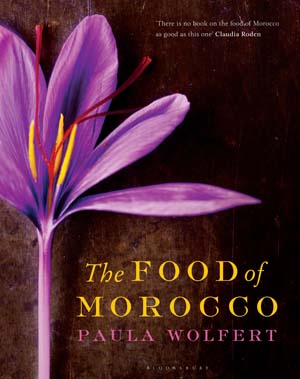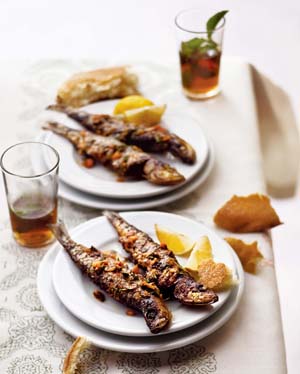Out of Africa
Andrew Kay shares his favourite food book for some time: Paula Wolfert’s The Food Of Morocco
I have said it before and I will no doubt say it again, I consume food books like some men consume pornorgaphy.

On those terms Paula Wolfert’s new book, The Food Of Morocco, is hardcore. It arrived today and I simply cannot put it down. Like all good food books it is far more than a cluster of recipes. Here she delivers a history, social commentary, and a feast of visual material to colour the whole experience.
I know about plenty of what is covered but it is passing knowledge. Wolfert fills in the detail, but in an easily absorbed manner.
Some of the recipes are pretty complex, but there are simpler versions offered, and some of the recips are alarmingly simple, after reading you wonder why you had never thought of thrm.
I quickly turned to find a recipe for Bastila of Fes, a favourite dish that I have eaten in Marrakesh where it was divine and here in Britain where it was a travesty.
Wolfert suggests using chicken or quail rather than the traditional pigeon breasts, but from there on it is a no-holds-barred feast of ingedients as diverse as eggs curdled in lemon juice, sugared almonds, cimnnamon and icing sugar. I’m not sure my oven will fit the traditional 50cm affair but I’m going to give it a damned good try.
The detail is amazing: in an okra dish the suggestion is that you thread the lady’s fingers onto a long peice of twine and pull the vegetable necklace out when you stir to avoid breaking the pods. Now that really is dedication.
Having once been a designer of food books I take my hat off to the lavish production; it is simply gorgeous throughout and easy to use. I also love Quentin Bacon’s fabulous photography, as each dish looks great but also achievable.
The Food Of Morocco by Paula Wolfert is published 6 September by Bloomsbury, Hardback, £35.
Kindly, the authors and publishers have allwoed us to print one of the stunning recipes in this book, a simple but impressive dish. You can get a flavour of both the cuisine and the culture from this recipe, the key to what makes the book quite so special and makes me long to return to North Africa to eat the exquisitely spiced food.
FRIED SARDINES, TANGIER-STYLE
This dish is known in Tangier as ‘husband and wife’ because of the positioning of the sardines. The fish heads are left on, and pairs of fish are arranged so that the heads are looking away from one another, like an old alienated married couple!

Serve hot or cold, brushed lightly with oil and lemon juice.
Serves 2
Ingredients
4 fresh or frozen small sardines
(about 350g)
1 tablespoon roughly chopped coriander leaves
1 tablespoon roughly chopped parsley leaves
1¼ teaspoons cumin seeds, preferably Moroccan
2 garlic cloves, peeled
1 teaspoon coarse sea salt
1 teaspoon sweet paprika
¼ teaspoon hot paprika or cayenne pepper
1 tablespoon fresh lemon juice
Oil for deep-frying
Flour for dusting
Olive oil
1 lemon, halved
Method
1. Rinse the sardines under cool running water. Slit open the bellies lengthways and remove the backbones and innards. Use scissors to snip away any bones near the head. Rinse and pat dry.
2. Crush the coriander and parsley to a paste in a heavy mortar or finely chop in a small blender. Add the cumin seeds, garlic and salt and crush or blend to a thick cream. Blend in the sweet paprika, hot paprika or cayenne and lemon juice. Smear the mixture over the flesh of all the sardines, then fold back together so that each sardine resumes its original shape. Arrange on a plate, cover and chill for 1 hour.
3. Heat oil for deep-frying to 190°C in a deep wide pan. Dust the sardines with flour, then fry them until golden brown and crisp on both sides. Drain on kitchen paper. Brush them with a little olive oil and lemon juice, then position ‘husband and wife’ pairs, heads looking away from each other. Serve at once, or allow to cool, cover and chill to serve cold.




















